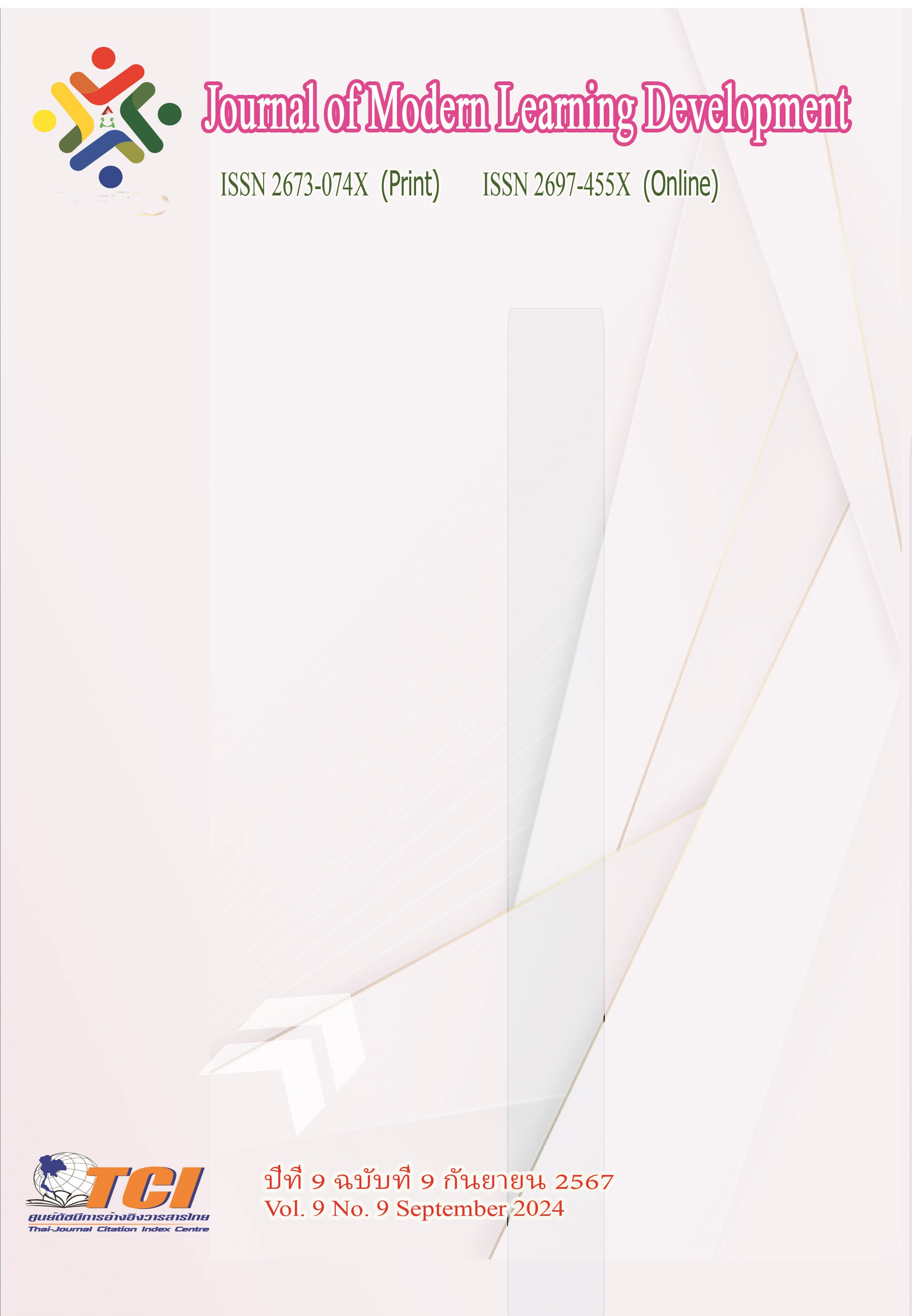The Analysis of Creativity and Expansion Guidelines of Innovative Tapestry Art for Liaoning Province in the People's Republic of China
Main Article Content
Abstract
The objectives of this article to provide Creativity and Expansion Guidelines of Innovative Tapestry Art for Liaoning Province in the People's Republic of China. The scope of this article is based on the case of Innovative Tapestry Art production in Liaoning Province, which is located in the northeast of People's Republic of China at present.
The analysis found that: (1) the key elements for developing the innovative Tapestry Art for Liaoning Province include the integration of traditional wisdom and modern art forms of the Innovative Tapestry Art for Liaoning Province, the adaptation of production materials, the application of technology for Tapestry Art for Liaoning Province, the concept of creativity, and the implementation and development of marketing that supports Tapestry Art for Liaoning Province; and (2) the approach to expanding the production of Tapestry Art for Liaoning Province includes the analysis of the market to gain a thorough understanding, the management of the area and population, the understanding of the supply chain and transportation, the analysis of marketing strategies, the planning of finance, the understanding and application of regulatory considerations, and the analysis of potential risks. These will help develop the innovative ideas and the approach to expanding the production of innovative tapestry in Liaoning Province in a sustainable manner.
Article Details
References
Alan Priest and Pauline Simmons.(1934). Chinese Textiles. New York: The Metropolitan Museum of Art Publishing, 4-49.
Alan Priest, Pauline Simmons and James More. (2015). Tapestry: Art, Craft and Collaboration. Journal of RSA The Royal Society for Arts,Manufactures and Commerce Publishing. 10 (03), P.701-702.
Jing Pan. (2023). Study on the metaphorical nature of textile fiber artworks of non-heritage. Journal of Education, Humanities and Social Sciences. 9 (04), 240-241.
Kuo-Kuang Fan, Ting Ting Feng. (2019). Discussion on Sustainable Development Strategies of the Traditional Handicraft Industry Based on Su-Style Furniture in the Ming Dynasty. 2nd Eurasian Conference on Educational Innovation. 27 - 29January 2019. Singapore. Singapore: Atlantis Publishing.
Loisf Lunin. (1990). The Descriptive Challenges of Fiber Art. Washington: University of Washington Publishing.
Maggie Leininger. (2012). ART invention: Utilizing Fiber Art For Activist Engagement. Textile Society of America Symposium Proceedings. 18-22 September 2012. Washington, DC. Washington, DC: Textile Society of America Publishing.
Nancy Duxbury. (2017). Cultural policies for sustainable development: fourstrategic paths. International Journal of Cultural Policy. Taylor & Francis Publishing, 11 (06), P. 221-225.
Rio de Janeiro. (1992). Report of the UnitedNations Conference on Environment and Development. New York: United Nations Publishing.
Shen Zhuang. (2023). Research on Digital Protection and Inheritance of Liaoning Intangible Cultural Heritage in the New Era. 11th International Education, Economics, Social Science, Arts, Sports and Management Engineering Conference. 11-26 November 2023. Liaoning, People’s Republic of China. Liaoning: Atlantis Press.
Yi Liu. (2023). Design Research and Planning Practice of Non-legacy Creative Products in Liaoning Region under the Dynamic Inheritance. 3rd International Conference on Management and Education, Humanities and Social Sciences. 11-12 November 2023. Liverpool, United Kingdom. Liverpool: Atlantis Press.


